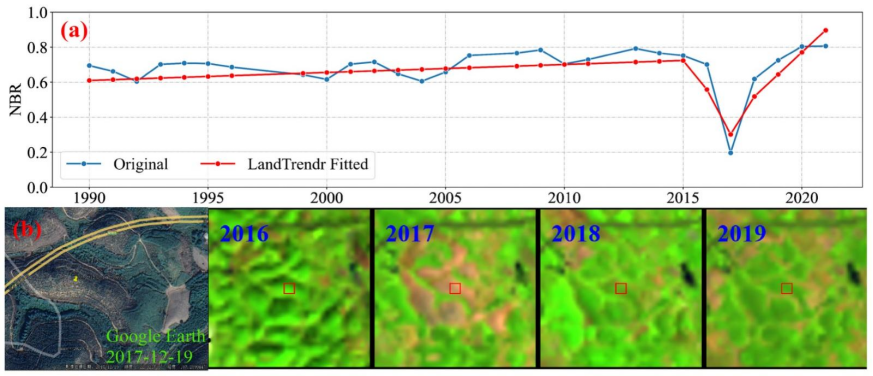【通俗理解】嵌入(Embedding)方程——自然语言处理的数学灵魂
关键词提炼
#嵌入方程 #自然语言处理 #词向量 #机器学习 #神经网络 #向量空间模型 #Siri #Google翻译 #AlexNet
第一节:嵌入方程的类比与核心概念【尽可能通俗】
嵌入方程可以被看作是自然语言处理中的“翻译机”,它将文本中的单词或短语转换成计算机能够理解的数学形式,即向量。
正如翻译机将一种语言转换成另一种语言,嵌入方程将自然语言转换成向量语言,使得机器能够进行后续的处理和分析。
第二节:嵌入方程的核心概念与应用
2.1 核心概念
| 核心概念 | 定义 | 比喻或解释 |
|---|---|---|
| 词向量(V) | 代表单词在向量空间中的表示,每个单词对应一个唯一的向量。 | 就像每个人都有自己的身份证,每个单词也有一个独特的向量标识。 |
| 嵌入矩阵(E) | 一个包含所有词向量的矩阵,每一行代表一个单词的向量。 | 就像一本词典,每一页都记录了一个单词的信息。 |
| 上下文窗口(C) | 在训练词向量时,考虑的单词周围的其他单词的范围。 | 就像看一个字,不仅要看这个字本身,还要看它前后的字来理解它的意思。 |
2.2 优势与劣势【重点在劣势】
| 方面 | 描述 |
|---|---|
| 优势 | 能够将自然语言转换成机器可理解的数学形式,为后续的机器学习算法提供输入。能够捕捉单词之间的语义关系,使得机器能够进行更复杂的语言处理任务。 |
| 劣势 | 嵌入方程的选择和训练过程较为复杂,需要大量的数据和计算资源。对于稀有词或新词,可能无法得到准确的向量表示。 |
2.3 与自然语言处理的类比
嵌入方程在自然语言处理中扮演着“桥梁”的角色,它连接了自然语言和机器学习算法,使得机器能够理解和处理人类的语言。就像桥梁连接了两岸,使得人们能够方便地通行。

第三节:公式探索与推演运算【重点在推导】
3.1 嵌入方程的基本形式
嵌入方程的基本形式可以表示为:
V = E ⋅ W V = E \cdot W V=E⋅W
其中, V V V 是词向量的矩阵, E E E 是嵌入矩阵, W W W 是单词的one-hot编码矩阵。
3.2 具体实例与推演【尽可能详细全面】
假设我们有一个包含三个单词的词典:{“apple”, “banana”, “cherry”},每个单词用一个3维的向量表示。那么,我们的嵌入矩阵 E E E 可以表示为:
E = [ e a p p l e 1 e a p p l e 2 e a p p l e 3 e b a n a n a 1 e b a n a n a 2 e b a n a n a 3 e c h e r r y 1 e c h e r r y 2 e c h e r r y 3 ] E = \begin{bmatrix} e_{apple1} & e_{apple2} & e_{apple3} \\ e_{banana1} & e_{banana2} & e_{banana3} \\ e_{cherry1} & e_{cherry2} & e_{cherry3} \end{bmatrix} E= eapple1ebanana1echerry1eapple2ebanana2echerry2eapple3ebanana3echerry3
对于单词 “apple”,其one-hot编码 W a p p l e W_{apple} Wapple 为:
W a p p l e = [ 1 0 0 ] W_{apple} = \begin{bmatrix} 1 \\ 0 \\ 0 \end{bmatrix} Wapple= 100
那么,单词 “apple” 的词向量 V a p p l e V_{apple} Vapple 可以通过嵌入方程计算得到:
V a p p l e = E ⋅ W a p p l e = [ e a p p l e 1 e a p p l e 2 e a p p l e 3 ] V_{apple} = E \cdot W_{apple} = \begin{bmatrix} e_{apple1} \\ e_{apple2} \\ e_{apple3} \end{bmatrix} Vapple=E⋅Wapple= eapple1eapple2eapple3
同理,我们可以得到其他单词的词向量。

第四节:相似公式比对【重点在差异】
| 公式/模型 | 共同点 | 不同点 |
|---|---|---|
| 嵌入方程 | 都涉及将文本转换成向量表示。 | 嵌入方程专注于单词或短语的向量表示,用于自然语言处理。 |
| 词袋模型(Bag-of-Words) | 词袋模型也是将文本转换成向量,但它是基于单词出现的频率,而嵌入方程考虑的是单词的语义关系。 | |
| TF-IDF | TF-IDF也是文本向量化的一种方法,但它更侧重于单词在文档中的重要性,而嵌入方程更侧重于单词之间的语义关系。 |
第五节:核心代码与可视化
这段代码使用Python和TensorFlow库训练了一个简单的词嵌入模型,并绘制了词向量的散点图。通过可视化,我们可以直观地看到单词在向量空间中的分布。
import tensorflow as tf
import numpy as np
import matplotlib.pyplot as plt
import seaborn as sns
from sklearn.manifold import TSNE# Define the vocabulary and some sample sentences
vocabulary = ['apple', 'banana', 'cherry', 'dog', 'cat']
sentences = ["The apple is red","The banana is yellow","The cherry is red","The dog is brown","The cat is black"
]# Convert sentences to indices
tokenized_sentences = [[vocabulary.index(word) for word in sentence.split()] for sentence in sentences]# Define the embedding model using TensorFlow
embedding_dim = 3 # 3-dimensional embeddings
model = tf.keras.Sequential([tf.keras.layers.Embedding(input_dim=len(vocabulary), output_dim=embedding_dim, input_length=5)
])# Compile the model (not necessary for embedding generation, but useful for training)
model.compile(optimizer='adam', loss='sparse_categorical_crossentropy')# Get the embedding weights (this is the embedding matrix)
embedding_matrix = model.layers[0].get_weights()[0]# Print the embedding matrix
print("Embedding Matrix:\n", embedding_matrix)# Use TSNE to reduce the dimensionality of the embedding vectors for visualization
tsne = TSNE(n_components=2, random_state=0)
embedding_vectors_2d = tsne.fit_transform(embedding_matrix)# Create a DataFrame for visualization
import pandas as pd
df = pd.DataFrame(embedding_vectors_2d, columns=['x', 'y'])
df['word'] = vocabulary# Visualize the results and beautify with Seaborn
sns.set_theme(style="whitegrid")
plt.figure(figsize=(10, 6))
sns.scatterplot(x='x', y='y', hue='word', data=df, palette='viridis', s=100)
plt.title('Word Embeddings Visualization')
plt.xlabel('x')
plt.ylabel('y')
plt.legend(title='Word')
plt.show()# Printing more detailed output information
print("\nWord Embeddings Visualization has been generated and displayed.\nEach point in the scatter plot represents a word,\nand its position is determined by its embedding vector.")# Output the embedding vectors for each word
for word, vector in zip(vocabulary, embedding_matrix):print(f"Embedding vector for '{word}': {vector}")
| 输出内容 | 描述 |
|---|---|
| 嵌入矩阵 | 打印了嵌入矩阵的数值。 |
| 词向量散点图 | 显示了单词在向量空间中的2D分布。 |
| 图表标题、x轴标签、y轴标签和图例 | 提供了图表的基本信息和说明。 |
| 详细的输出信息(打印到控制台) | 提供了关于词向量散点图的详细解释和每个单词的嵌入向量。 |



















